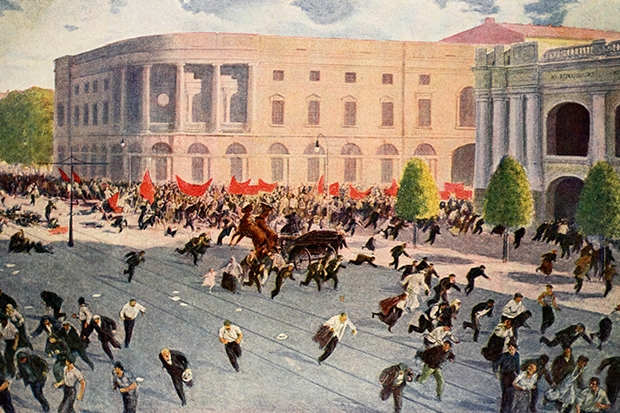Helen Rappaport’s new book makes no claim to be a complete account of the Russian revolution. Instead it presents a highly readable and fluent description of the events of 1917 in the capital, Petrograd, as experienced by the city’s many foreign residents. Russia’s booming prewar economy had attracted every sort of business person and technical expert, as well as diplomats, journalists, adventurers and fleets of governesses. Their first-hand revolutionary experiences were too extraordinary not to record, and those who did not write contemporaneous accounts often produced memoirs later. Rappaport has unearthed striking new material from archives in Russia, the US, France and at the University of Leeds.
From the start of the year everyone from ambassadors to actresses seems to have been struck by the atmosphere in the city, ‘taut as a wire’. There were serious food shortages and people queued through the night for bread. Thousands of laid-off workers milled around the streets, while strikes and riots were put down viciously by Cossacks and the hated ‘Pharoahs’, mounted police armed with sabres. Meanwhile the opera was still crammed, and at the New Year’s Eve parties, Moët et Chandon Brut Imperial flowed in streams. When revolution finally broke out at the end of February, only the Tsar was taken by surprise, it seems; behind the front lines in Mogilev, he had ignored warnings from many in the foreign community.
Histories have usually portrayed ‘the February days’ — the mass demonstrations and riots that cumulated in the Tsar’s abdication on 2 March — as a more or less peaceful revolution, an exhilarating moment of unity between Russians of all classes. Many of Rappaport’s witnesses did report on the air of celebration, the good humour of the crowds and the swiftness with which normal life returned.








Comments
Join the debate for just £1 a month
Be part of the conversation with other Spectator readers by getting your first three months for £3.
UNLOCK ACCESS Just £1 a monthAlready a subscriber? Log in